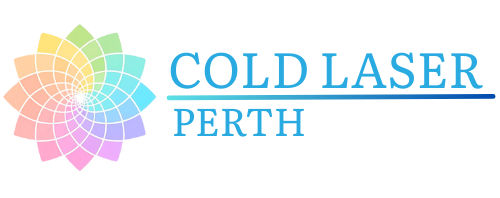Cold Laser Therapy for Sports Injuries
Athletes and active individuals frequently experience sports injuries, from sprains and strains to muscle tears, fractures, and tendonitis. While traditional treatments like ice therapy, physiotherapy, and rest help manage pain and recovery, many are now turning to Cold Laser Therapy (Low-Level Laser Therapy - LLLT) for faster healing, reduced inflammation, and enhanced muscle recovery.
But how effective is Cold Laser Therapy for sports-related injuries? Let’s explore its benefits, applications, and how it may help you return to peak performance faster.
What is Cold Laser Therapy?
Cold Laser Therapy, also known as Low-Level Laser Therapy (LLLT), is a non-invasive, drug-free treatment that uses low-intensity laser light to stimulate cellular repair, enhance blood circulation, and reduce inflammation. Unlike high-powered surgical lasers, Cold Laser Therapy does not cut or burn tissue, making it a safe and painless option for musculoskeletal injuries.
How Does Cold Laser Therapy Work?
- Stimulates cellular repair by increasing ATP (cellular energy production)
- Reduces inflammation by improving blood circulation and lymphatic drainage
- Enhances collagen production to support tissue healing
- May help decrease nerve sensitivity, reducing pain levels
Common Sports Injuries & How Cold Laser Therapy May Help
Whether you’re a professional athlete, gym-goer, or weekend warrior, sports injuries can disrupt your training and daily activities. Cold Laser Therapy is commonly used to assist with recovery from injuries such as:
1. Fractures (Bone Breaks & Stress Fractures)
- Stress fractures occur due to repetitive impact or overuse, common in runners and endurance athletes.
- Traumatic fractures result from sudden impact, falls, or collisions in contact sports.
- Cold Laser Therapy may help by stimulating osteoblast (bone-forming cell) activity, promoting bone healing and reducing pain.
A clinical study published in Lasers in Medical Science found that Cold Laser Therapy may enhance callus formation and increase bone mineral density in the early stage of fracture healing. The study, which involved tibial bone fractures in rabbits, showed that laser-treated fractures had significantly higher bone mineral density and improved callus development compared to the control group (Shakouri et al., 2009).
2. Sprains & Strains
- Sprains occur when ligaments are overstretched or torn.
- Strains involve tears in muscles or tendons, often due to sudden movements or overuse.
- Cold Laser Therapy may help by reducing swelling, pain, and tissue damage, promoting a faster healing process.
A randomized controlled trial published in Lasers in Surgery and Medicine found that Cold Laser Therapy may significantly enhance tissue healing and reduce pain in acute sports injuries by accelerating the natural repair mechanisms in muscle and connective tissues (Bjordal et al., 2009).
3. Tendonitis & Overuse Injuries
- ✔ Common in runners, tennis players, and weightlifters.
- ✔ Caused by repetitive strain on tendons, leading to inflammation and pain.
- ✔ Cold Laser Therapy may assist in reducing inflammation and promoting tendon healing.
Research suggests that Cold Laser Therapy may improve symptoms of Achilles tendonitis by enhancing circulation and reducing oxidative stress on cells (Tumilty et al., 2010).
4. Muscle Tears & Recovery from Intense Exercise

- Muscle injuries occur from overexertion, sudden impact, or improper warm-up.
- Cold Laser Therapy may accelerate muscle repair by stimulating new cell growth and improving oxygen supply.
- May also help in reducing delayed-onset muscle soreness (DOMS) after intense workouts.
A systematic review published in Journal of Functional Morphology and Kinesiology concluded that Cold Laser Therapy (PBM) may effectively reduce exercise-induced muscle fatigue, improve recovery time, and enhance endurance performance among athletes (Ferreira et al., 2024).
5. Joint Injuries (Knee, Shoulder, and Elbow Pain)
✔ Common in contact sports, weightlifting, and repetitive movement activities. ✔ Injuries like runner’s knee, rotator cuff injuries, and tennis elbow cause chronic pain and limited mobility. ✔ Cold Laser Therapy may help by reducing inflammation, improving circulation, and assisting in cartilage repair.
Benefits of Cold Laser Therapy for Athletes
Athletes use Cold Laser Therapy as part of their recovery and rehabilitation routine because of its many potential benefits, including:
- Non-Invasive & Drug-Free – Provides a natural alternative to pain medications or injections.
- Faster Recovery – May help reduce downtime from injuries.
- Reduced Inflammation & Swelling – Helps minimize post-injury discomfort.
- Supports Long-Term Joint & Muscle Health – Ideal for preventing reinjury.
Because Cold Laser Therapy is painless and has no known side effects, it is increasingly used by professional athletes, physiotherapists, and sports rehabilitation specialists as part of their injury management and performance recovery programs.
Is Cold Laser Therapy Right for Your Sports Injury?
Cold Laser Therapy is an excellent option for athletes and active individuals looking to recover faster, reduce pain, and enhance muscle healing. It is commonly used as part of a comprehensive sports injury treatment plan, alongside physiotherapy, chiropractic care, and strength training.
At Cold Laser Perth, we provide cutting-edge Cold Laser Therapy treatments designed to help athletes and active individuals recover quickly and get back to doing what they love.
📞 Call us at 9300 0095 or Book Online Here to learn more.
References:
- Tumilty, S., Munn, J., McDonough, S., et al. (2010). Low level laser treatment of tendinopathy: a systematic review with meta-analysis. Photomedicine and Laser Surgery, 28(1), 3-16.
- Haidari, S. M., et al. (2016). Effect of low-level laser therapy on bone fracture healing: a systematic review. Lasers in Medical Science.
- Ferreira, D. M., de Souza, A. S., Tomazoni, S. S., et al. (2024). Photobiomodulation therapy in sports performance and recovery: a systematic review. Journal of Functional Morphology and Kinesiology, 9(4), 181.
- Shakouri, S. K., Soleimanpour, J., Salekzamani, Y., & Oskuie, M. R. (2009). Effect of low-level laser therapy on the fracture healing process. Lasers in Medical Science, 41(5), 423-432.

